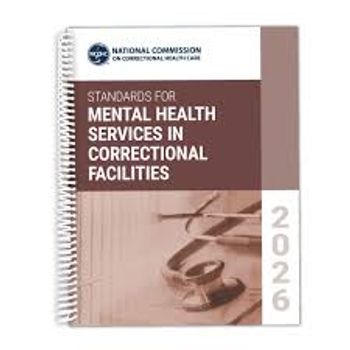
Causes, Diagnosis, and Prognosis of ICH, Part I
Spontaneous nontraumatic intracerebral hemorrhage is associated with greater mortality and more severe neurologic deficits than any other stroke subtype, with as many as half of all patients dying within 30 days and only 10% of survivors regaining functional independence.
Spontaneous nontraumatic intracerebral hemorrhage (ICH) occurs in nearly 50,000 people in the United States each year, accounting for approximately 10% of all strokes in this country.1 It is associated with greater mortality and more severe neurologic deficits than any other stroke subtype,2 with as many as half of all patients dying within 30 days and only 10% of survivors regaining functional independence.2-5
Primary ICH occurs when a weakened cerebral blood vessel spontaneously bleeds into the substance of the brain. It is distinguished from secondary ICH, which is hemorrhage from a cerebral lesion caused by trauma, vascular anomaly (eg, aneurysm, arteriovenous malformation), or infarct.
RISK FACTORS
As with ischemic stroke, the risk of ICH increases dramatically with age. The rate of hemorrhage doubles with each decade until age 80 years, when the incidence plateaus at nearly 25 times that of the previous decade.6 In the United States, ICH is 2 to 3 times more common in African Americans and Hispanics than in white persons (incidence rates of 32, 35, and 10 to 15 per 100,000 population, respectively).7,8 The incidence in Asian countries is considerably greater (61 per 100,000 population).9
The single most important modifiable risk factor for ICH is hypertension10,11; adequate, long-term treatment of chronic hypertension significantly reduces hemorrhage risk.12 However, because elevated blood pressure commonly occurs in the setting of ICH, a hemorrhage should not be ascribed to hypertension simply because the patient is hypertensive on admission. This designation should be reserved for patients who have a history of hypertension and/or have evidence of hypertensive end-organ damage (eg, retinal vascular changes, left ventricular hypertrophy) and persistently elevated blood pressure.
Chronic hypertension damages the tunica media of small arteries in the brain, weakening the vessel walls and making them prone to rupture. Pathologically, lipohyalinosis, fibrinoid necrosis, and microaneurysm formation (Charcot-Bouchard aneurysms) are seen, but the pathogenetic role of the microaneurysms in vascular rupture is uncertain.13
Hypertensive ICH tends to occur deep in the cerebral hemispheres, especially in the putamen, thalamus, and deep white matter10 (Figure 1). Other common locations for hypertensive ICH include the pons and cerebellum.
All of these sites are supplied by small penetrating arteries that run perpendicular to the parent vessels from which they arise.14 These penetrating arteries are subject to high sheer stress and have no collaterals, making them vulnerable to the effects of increased blood pressure.
ICHs that occur in an atypical location, in multiple locations, in association with subarachnoid hemorrhage, or in the absence of hypertension should raise the suspicion of a nonhypertensive cause (Figure 2, Table).
Cerebral amyloid angiopathy (CAA) is an important cause of predominantly lobar ICH in the elderly (Figure 2A). It is a vascular disorder; amyloid-ß protein is deposited within the media and adventitia of small to medium-sized meningeal and cortical blood vessels, causing them to become brittle and break. Deposition in the typical sites for hypertensive hemorrhage is rare but has been reported in the cerebellum.15 The prevalence of amyloid in cerebral vessels increases dramatically with age16 and may partially account for the exponential rise in the risk of ICH with increasing age. The association between CAA and Alzheimer disease is strong: 75% to 80% of patients with CAA have dementia.17
An overrepresentation of the apolipoprotein E e2 and e4 genotypes is seen in CAA-related hemorrhage. These alleles are associated with an earlier age of onset of first hemorrhage and a higher risk of early recurrence.18 Although amyloid-associated ICH is a pathologic diagnosis, the finding of recurrent lobar ICH or previous lobar microhemorrhages on MRI in an elderly nonhypertensive patient with lobar ICH strongly suggests the diagnosis.
Approximately 10% of ICHs are due to hematologic causes,19 most often in association with the use of oral anticoagulants.20 Coagulopathy-related ICH also may occur in the setting of other antithrombotic and thrombolytic agents, systemic disease (Figure 2B), or congenital or acquired factor deficiencies.
About 5% of ICHs are caused by rupture of an intracranial aneurysm (fusiform and saccular) (Figure 2C) or vascular malformation (arteriovenous malformation or angioma).3 Other less common causes of ICH are listed in the Table. The effects of smoking21,22 and diabetes23 on the risk of ICH are not clear.
PATHOPHYSIOLOGY
The mechanisms by which ICH injures the brain are complex. The primary injury is one of direct tissue destruction through mechanical compression. Rupture of a cerebral blood vessel introduces a sudden force of blood into the brain parenchyma. The mass of blood products destroys tissue locally and produces tissue shifts within the intracranial cavity, sometimes resulting in brain herniation and death. In more than one third of patients, continued bleeding or re-bleeding results in hematoma enlargement and further mechanical injury within the first few hours after onset24 (Figure 1). In noncoagulopathic patients, the risk of hemorrhage growth is greatest in the first 3 hours, becomes quite rare after 12 hours, and never occurs after 24 hours.25 The risk of hematoma enlargement is greater and more prolonged in patients taking anticoagulants.26
After hemorrhage, hemostasis is rapidly achieved at the site of vascular injury by the formation of a platelet-fibrin plug. Concurrent with the activation of local hemostatic processes, however, a localized fibrinolytic response also is activated to limit the extent of coagulation, repair vascular injury, and reestablish normal blood flow. After several days, red blood cells within the clot begin to lyse, cellular infiltrates appear, and the process of reabsorption begins. Months later, a residual collapsed cavity is all that remains.
In addition to the primary mechanical injury produced by the bleeding itself, secondary injury is believed to occur after the bleeding stops. A number of secondary pathophysiologic processes have been implicated as causes of ongoing injury, including toxic effects of the various clot constituents,27 ischemia,28 edema,29and activation of apoptosis.30 Although each of these processes has been demonstrated in animal models, the clinical importance of any of them for humans remains unsettled.31,32 For example, positron emission tomography studies performed 10 to 22 hours after symptom onset in humans have shown that cerebral blood flow and metabolism are reduced around the clot with no evidence of ongoing ischemia.33
CLINICAL FEATURES
The clinical symptoms of ICH are highly variable and depend on the location and size of the lesion. They are indistinguishable from those of ischemic stroke except that ICH is more commonly associated with signs of increased intracranial pressure (ICP), such as altered level of consciousness, headache, and vomiting10; thus neuroimaging is mandatory for differentiating the two. Symptoms are either maximal at onset or develop over minutes to hours.
Most patients with ICH have elevated arterial blood pressure on admission, even those with no history of hypertension.10 Mean arterial pressure is greater than 120 mm Hg in more than two thirds of patients and greater than 140 mm Hg in more than one third.34 The acute increase in blood pressure is likely multifactorial, reflecting chronic hypertension-the brain's attempt to maintain cerebral perfusion pressure in response to the sudden increase in ICP, pain and anxiety, and sympathetic activation. There is no evidence that it is the cause of the hemorrhage. Even without pharmacologic intervention, blood pressure tends to decline to premorbid levels 7 to 10 days after hemorrhage.35
Seizures occur in approximately 10% of patients within the first 2 weeks of hemorrhage, most commonly in the first 24 hours. They may be partial or generalized and are almost always associated with lobar ICH-particularly cortical hemorrhages in the temporal or parietal lobes-or underlying vascular or neoplastic lesions.36
Neurologic deterioration after hospital admission occurs in one quarter to two thirds of patients with ICH.31,37 Twenty-five percent of those who worsen do so suddenly.10 Understanding the mechanisms of neurologic deterioration is important because patients who worsen clinically tend to do poorly overall; they account for 15% of the mortality seen during the first 2 weeks after the hemorrhagic event.31 The most easily defined and well-described cause of deterioration is hematoma enlargement, which is seen in more than one quarter of patients who worsen clinically.31 Neurologic worsening may occur in the setting of systemic complications, such as fever, infection, or electrolyte disturbance. The role of edema, ischemia, and hydrocephalus in clinical deterioration is much more elusive.
DIAGNOSIS
Noncontrast CT is the most widely used imaging modality for the diagnosis of acute ICH. An acute hematoma is recognized on a CT scan as a well-defined area of increased density surrounded by a rim of decreased density. The cause of the hypodense rim is controversial, but it is at least partially explained by the process of clot retraction, in which the clot separates into a central mass of red blood cells and a surrounding area of serum. Over the first few weeks, the borders of the high and low attenuation regions become increasingly indistinct until the hematoma is isodense with adjacent brain tissue.38 A decrease in mass effect lags behind the signal changes, indicating that the apparent resolution of the hematoma is merely a manifestation of morphologic changes within the extravasated blood. Peripheral contrast enhancement can often be seen at this subacute stage and is thought to be caused by angiogenesis and breakdown of the blood-brain barrier.39 By 2 to 6 months, CT may show no evidence of previous hemorrhage, an area of hypodensity, or a slitlike scar.40
Multi-sequence, stroke protocol MRI (diffusion-, T1-, T2-, and T2*-weighted images) also reliably detects acute hemorrhage,41 even as early as 20 minutes after symptom onset.42 T2-weighted MRI underestimates lesion size by about 13% relative to CT, however.43 Each hemoglobin oxidation state during evolution of the hematoma produces a predictable pattern of MR signal intensity.44 MRI is better able than CT to determine the approximate age of a hematoma. The appearance on a typical T2-weighted MRI of a hyperacute ICH is a targetlike lesion with a hyperintense signal at the lesion core surrounded by a rim of isointense to normal brain tissue, and a hyperintense signal in the adjacent tissue (Figure 3B). Gradient echo (T2*-weighted) images demonstrate a hypointense rim surrounding a heterogeneous hemorrhagic core with increased signal in the perihematomal tissue (Figure 3C). In addition, gradient echo sequences have the benefit of demonstrating the iron-containing deposits of previous asymptomatic hemorrhages.45
MRI and angiography can be useful in evaluating the cause of ICH if an underlying lesion (eg, vascular malformation) is suspected. The angiographic yield is as high as 50% to 65% in lobar ICH and primary intraventricular hemorrhage in the nonhypertensive patient, but is extremely low when the patient has chronic hypertension and the hemorrhage is in 1 of the typical sites associated with hypertensive hemorrhage.46
PROGNOSIS
The prognosis for those with ICH is poor. The 30-day mortality rate is 25% to 50%, with half of the deaths occurring in the first 48 hours.5The 10-year mortality rate is 82%.47 Transtentorial herniation accounts for a greater proportion of deaths in patients with ICH than it does in those who have had ischemic stroke.48 Although full recovery is possible in those who have small hemorrhages and mild deficits, the majority of survivors are left with considerable disabilities.3-5 Clinical factors predicting poor outcome include older age, impaired level of consciousness on admission, elevated blood pressure on admission, and in-hospital neurologic deterioration.
Radiographic features include large hematoma size on admission, intraventricular extension, midline shift, hydrocephalus, and hematoma enlargement.24,31,48-52 The frequent practice in the United States of withdrawing care in patients expected to have a poor outcome usually is not controlled for in predictive models and has been shown to negate the predictive value of all other variables.53 On the other hand, despite striking racial differences in the rate of withdrawal or limitation of care in 1 center-white patients were almost twice as likely to have care withdrawn or limited than were African Americans-the overall mortality was the same in the 2 groups.54
Overall, the most frequent cause of death after ICH is withholding or withdrawal of life-support interventions (accounting for almost two thirds of all deaths), followed by early (within 48 hours) transtentorial herniation with progression to brain death.54
Complications of immobility (eg, pulmonary embolism, pneumonia) account for most of the other deaths,5 but much less commonly than in ischemic stroke. Survivors of ICH face a 4% risk of recurrent stroke per year, with recurrent ICH twice as likely as ischemic stroke, especially in those with lobar hemorrhage.55 The majority of patients with ICH do not develop epilepsy; however, as with stroke in general, late seizures are more likely to occur in those who had early seizures.36,56
Editor's Note: This work was supported by grants from the National Institutes of Health (NS35966 and 1K23NS044885). The article is the first of a 2-part series. Look for the follow-up, "Management of Intracerebral Hemorrhage," in the next issue of Applied Neurology.
REFERENCES
1. Kissela B, Schneider A, Kleindorfer D, et al. Stroke in a biracial population: the excess burden of stroke among blacks. Stroke. 2004;35:426-431.
2. Foulkes MA, Wolf PA, Price TR, et al. The Stroke Data Bank: design, methods, and baseline characteristics. Stroke. 1988;19:547-554.
3. Feldmann E. Intracerebral hemorrhage. Stroke. 1991;22:684-691.
4. Daverat P, Castel JP, Dartigues JF, Orgogozo JM. Death and functional outcome after spontaneous intracerebral hemorrhage. A prospective study of 166 cases using multivariate analysis. Stroke. 1991;22:1-6.
5. Counsell C, Boonyakarnkul S, Dennis M, et al. Primary intracerebral haemorrhage in the Oxfordshire Community Stroke Project, 2: prognosis. Cerebrovasc Dis. 1995;5:26-34.
6. Ojemann RG, Heros RC. Spontaneous brain hemorrhage. Stroke. 1983;14:468-475.
7. Gross CR, Kase CS, Mohr, JP, et al. Stroke in south Alabama: incidence and diagnostic features-a population based study. Stroke. 1984;15:249-255.
8. Bruno A, Carter S, Qualls C, Nolte KB. Incidence of spontaneous intracerebral hemorrhage among Hispanics and non-Hispanic whites in New Mexico. Neurology. 1996;47:405-408.
9. Tanaka H, Ueda Y, Date C, et al. Incidence of stroke in Shibata, Japan: 1976-1978. Stroke. 1981;12:460-466.
10. Mohr JP, Caplan LR, Melski JW, et al. The Harvard Cooperative Stroke Registry: a prospective registry. Neurology. 1978;28:754-762.
11. Brott T, Thalinger K, Hertzberg V. Hypertension as a risk factor for spontaneous intracerebral hemorrhage. Stroke. 1986;17:1078-1083.
12. PROGRESS Collaborative Group. Randomised trial of a perindopril-based blood-pressure-lowering regimen among 6,105 individuals with previous stroke or transient ischaemic attack [published corrections appear in Lancet. 2001;358:1556 and Lancet. 2002;359:2120]. Lancet. 2001;358:1033-1041.
13.Fisher CM. Cerebral miliary aneurysms in hypertension. Am J Pathol. 1972;66:313-330.
14. Fisher CM. Pathological observations in hypertensive cerebral hemorrhage. J Neuropathol Exp Neurol. 1971;30:536-550.
15. Itoh Y, Yamada M, Hayakawa M, et al. Cerebral amyloid angiopathy: a significant cause of cerebellar as well as lobar cerebral hemorrhage in the elderly. J Neurol Sci. 1993;116:135-141.
16. Masuda J, Tanaka K, Ueda K, Omae T. Autopsy study of incidence and distribution of cerebral amyloid angiopathy in Hisayama, Japan. Stroke. 1988;19:205-210.
17. Tanskanen M, Lindsberg PJ, Tienari PJ, et al. Cerebral amyloid angiopathy in a 95+ cohort: complement activation and apolipoprotein E (ApoE) genotype. Neuropathol Appl Neurobiol. 2005; 31:589-599.
18. O'Donnell HC, Rosand J, Knudsen KA, et al. Apolipoprotein E genotype and the risk of recurrent lobar intracerebral hemorrhage. N Engl J Med. 2000;342:240-245.
19. del Zoppo GJ, Mori E. Hematologic causes of intracerebral hemorrhage and their treatment. Neurosurg Clin N Am. 1992;3:637-658.
20. Franke CL, de Jonge J, van Swieten JC, et al. Intracerebral hematomas during anticoagulant treatment. Stroke. 1990;21:726-730.
21. Juvela S, Hillbom M, Palomaki H. Risk factors for spontaneous intracerebral hemorrhage. Stroke. 1995;26:1558-1564.
22. Kurth T, Kase CS, Berger K, et al. Smoking and the risk of hemorrhagic stroke in men. Stroke. 2003;34:1151-1155.
23. Rodriguez BL, D'Agostino R, Abbott RD, et al. Risk of hospitalized stroke in men enrolled in the Honolulu Heart Program and the Framingham Study: a comparison of incidence and risk factor effects. Stroke. 2002;33:230-236.
24. Brott T, Broderick J, Kothari R, et al. Early hemorrhage growth in patients with intracerebral hemorrhage. Stroke. 1997;28:1-5.
25. Kazui S, Naritomi H, Yamamoto H, et al. Enlargement of spontaneous intracerebral hemorrhage. Incidence and time course. Stroke. 1996;27:1783-1787.
26. Flibotte JJ, Hagan N, O'Donnell J, et al. Warfarin, hematoma expansion, and outcome of intracerebral hemorrhage. Neurology. 2004;63:1059-1064.
27. Lee KR, Betz AL, Keep RF, et al. Intracerebral infusion of thrombin as a cause of brain edema. J Neurosurg. 1995;83:1045-1050.
28. Mendelow AD. Spontaneous intracerebral haemorrhage. J Neurol Neurosurg Psychiatry. 1991;54:193-195.
29. Lee KR, Kawai N, Kim S, et al. Mechanisms of edema formation after intracerebral hemorrhage: effects of thrombin on cerebral blood flow, blood-brain barrier permeability, and cell survival in a rat model. J Neurosurg. 1997;86:272-278.
30. Matsushita K, Meng W, Wang X, et al. Evidence for apoptosis after intercerebral hemorrhage in rat striatum. J Cereb Blood Flow Metab. 2000;20:396-404.
31. Mayer SA, Sacco RL, Shi T, Mohr JP. Neurologic deterioration in noncomatose patients with supratentorial intracerebral hemorrhage. Neurology. 1994;44:1379-1384.
32. Zazulia AR, Diringer MN, Derdeyn CP, Powers WJ. Progression of mass effect after intracerebral hemorrhage. Stroke. 1999;30:1167-1173.
33. Zazulia AR, Diringer MN, Videen TO, et al. Hypoperfusion without ischemia surrounding acute intracerebral hemorrhage. J Cereb Blood Flow Metab. 2001;21:804-810.
34. Carlberg B, Asplund K, Hagg E. The prognostic value of admission blood pressure in patients with acute stroke. Stroke. 1993;24:1372-1375.
35. Wallace JD, Levy LL. Blood pressure after stroke. JAMA.1981;246:2177-2180.
36. Bladin CF, Alexandrov AV, Bellavance A, et al. Seizures after stroke: a prospective multicenter study. Arch Neurol. 2000;57:1617-1622.
37. Flemming KD, Wijdicks EF, St Louis EK, Li H. Predicting deterioration in patients with lobar haemorrhages. J Neurol Neurosurg Psychiatry. 1999;66:600-605.
38. Bergstrom M, Ericson K, Levander B, et al. Variation with time of the attenuation values of intracranial hematomas. J Comput Assist Tomogr. 1977;1:57-63.
39. Takasugi S, Ueda S, Matsumoto K. Chronological changes in spontaneous intracerebral hematoma-an experimental and clinical study. Stroke. 1985;16:651-658.
40. Franke CL, van Swieten JC, van Gijn J. Residual lesions on computed tomography after intracerebral hemorrhage. Stroke. 1991;22:1530-1533.
41. Fiebach JB, Schellinger PD, Gass A, et al. Stroke magnetic resonance imaging is accurate in hyperacute intracerebral hemorrhage: a multicenter study on the validity of stroke imaging. Stroke. 2004;35:502-506.
42. Linfante I, Llinas RH, Caplan LR, Warach S. MRI features of intracerebral hemorrhage within 2 hours from symptom onset. Stroke. 1999;30:2263-2267.
43. Schellinger PD, Jansen O, Fiebach JB, et al. A standardized MRI stroke protocol: comparison with CT in hyperacute intracerebral hemorrhage. Stroke. 1999;30:765-768.
44. Zimmerman RD, Heier LA, Snow RB, et al. Acute intracranial hemorrhage: intensity changes on sequential MR scans at 0.5 T. AJR. 1988;150:651-661.
45. Tsushima Y, Aoki J, Endo K. Brain microhemorrhages detected on T2*-weighted gradient-echo MR images. AJNR. 2003;24:88-96.
46. Zhu XL, Chan MS, Poon WS. Spontaneous intracranial hemorrhage: which patients need diagnostic cerebral angiography? A prospective study of 206 cases and review of the literature. Stroke. 1997;28:1406-1409.
47. Flaherty ML, Haverbusch M, Sekar P, et al. Long-term mortality after intracerebral hemorrhage. Neurology. 2006;66:1182-1186.
48. Franke CL, van Swieten JC, Algra A, van Gijn J. Prognostic factors in patients with intracerebral haematoma. J Neurol Neurosurg Psychiatry. 1992;55:653-657.
49. Broderick JP, Brott TG, Duldner JE, et al. Volume of intracerebral hemorrhage. A powerful and easy-to-use predictor of 30-day mortality. Stroke. 1993;24:987-993.
50. Diringer MN, Edwards DF, Zazulia AR. Hydrocephalus: a previously unrecognized predictor of poor outcome from supratentorial intracerebral hemorrhage. Stroke. 1998;29:1352-1357.
51. Tuhrim S, Horowitz DR, Sacher M, Godbold JH. Volume of ventricular blood is an important determinant of outcome in supratentorial intra-cerebral hemorrhage. Crit Care Med. 1999;27:617-621.
52. Fogelholm R, Avikainen S, Murros K. Prognostic value and determinants of first-day mean arterial pressure in spontaneous supratentorial intracerebral hemorrhage. Stroke. 1997;28:1396-1400.
53. Becker KJ, Baxter AB, Cohen WA, et al. Withdrawal of support in intracerebral hemorrhage may lead to self-fulfilling prophecies. Neurology. 2001;56:766-772.
54. Zurasky JA, Aiyagari V, Zazulia AR, et al. Early mortality following spontaneous intracerebral hemorrhage. Neurology. 2005;64:725-727.
55. Bailey RD, Hart RG, Benavente O, Pearce LA. Recurrent brain hemorrhage is more frequent than ischemic stroke after intracranial hemorrhage. Neurology. 2001;56:773-777.
56. Kilpatrick CJ, Davis SM, Hopper JL, Rossiter SC. Early seizures after acute stroke. Risk of late seizures. Arch Neurol. 1992;49:509-511.
ALLYSON R. ZAZULIA, MD, is assistant professor of neurology and radiology at Washington University School of Medicine in St Louis.
Evidence-based medicine
- Brott T, Broderick J, Kothari R, et al. Early hemorrhage growth in patients with intracerebral hemorrhage. Stroke. 1997;28:1-5.
- Rodriguez BL, D'Agostino R, Abbott RD, et al. Risk of hospitalized stroke in men enrolled in the Honolulu Heart Program and the Framingham Study: a comparison of incidence and risk factor effects. Stroke. 2002;33:230-236.
Newsletter
Receive trusted psychiatric news, expert analysis, and clinical insights — subscribe today to support your practice and your patients.

















